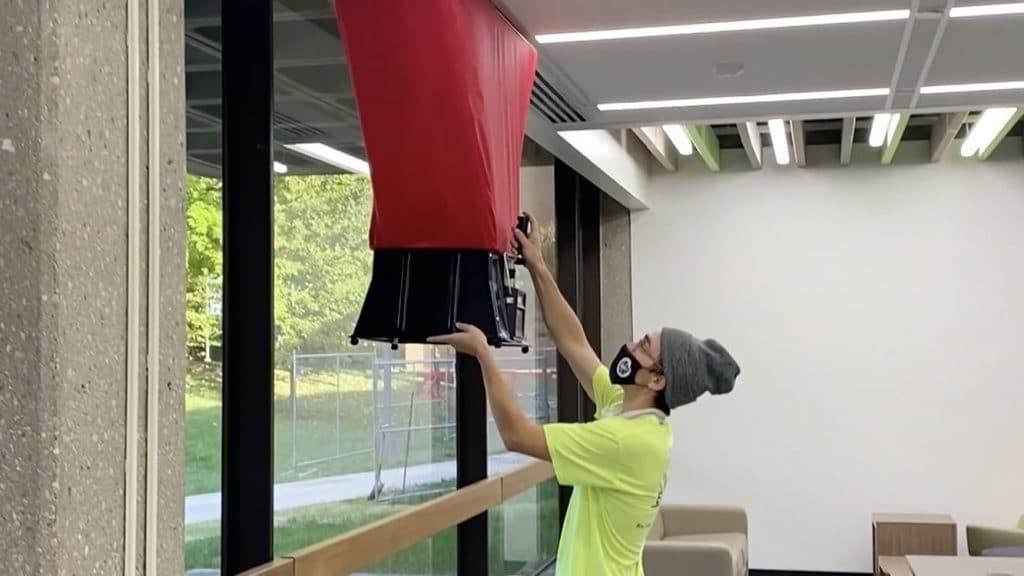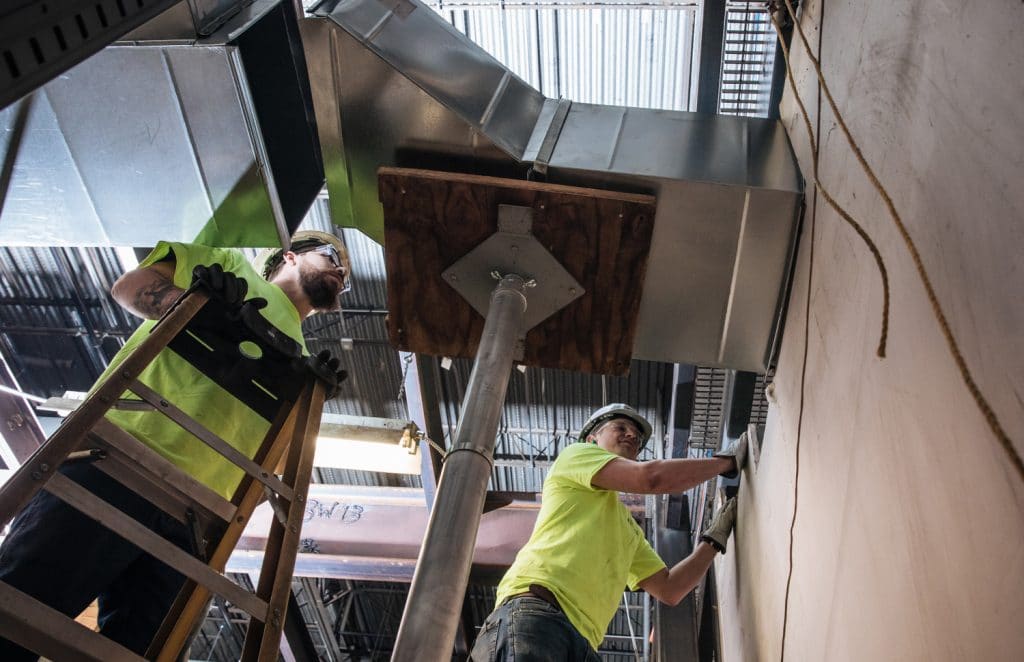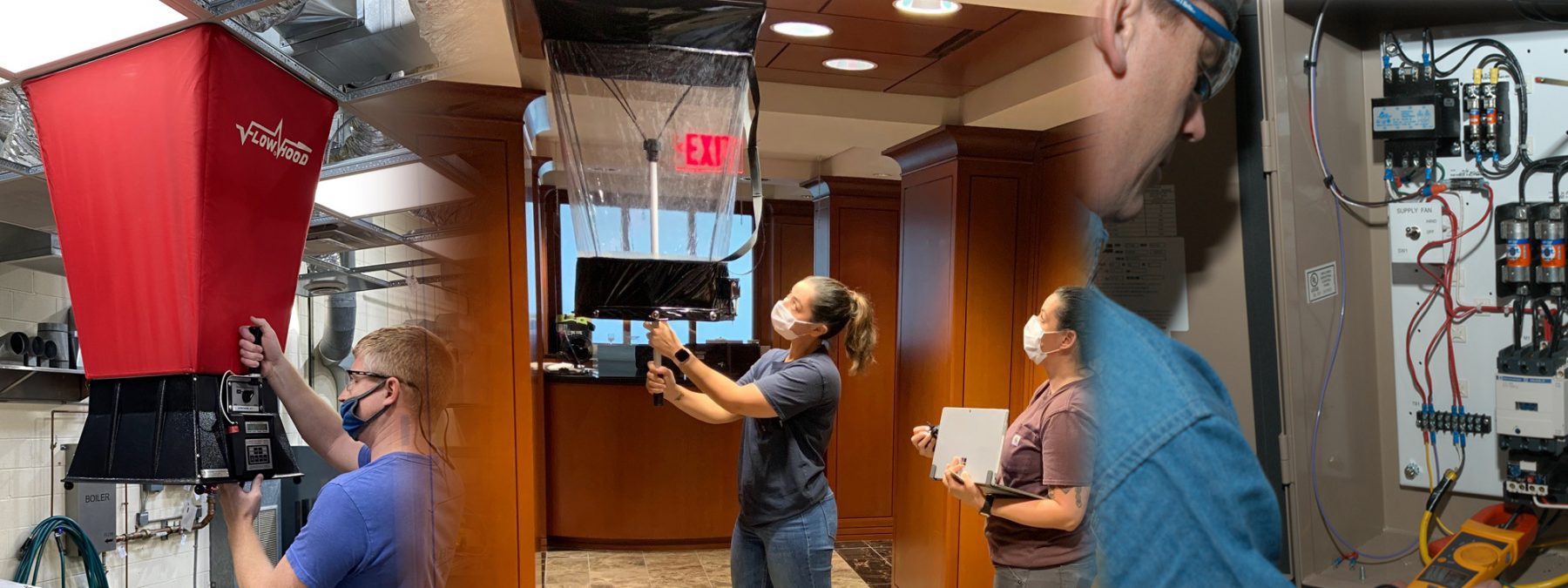
Improving ventilation is a top COVID-19 prevention strategy
Clean air is critical for our health and well-being, and proper ventilation is an important mitigation measure that can help prevent COVID-19 and other airborne pathogens. However, despite its importance, poor ventilation in our buildings has been a widespread and persistent problem, as demonstrated in this June 2020 GAO report. While some buildings have been able to tackle the issue, continued effort to address indoor air quality must progress to help us recover from the existing pandemic and help us prevent outbreaks in the future. Proper ventilation is not only a key to our recovery, but it will also help cut building emissions, lower energy costs, ensure systems are meeting design intent and make buildings safe for occupants. Learn more at BetterAirInBuildings.org.
Steps to make your building safe:
Every building has some form of a Heating, Ventilation, and Air Conditioning (HVAC) system. These systems are critical to controlling the temperature, humidity and air quality of a building. Similar to a car, HVAC systems need regular and proper maintenance in order to work correctly. While HVAC systems vary, a good rule of thumb is that a HVAC system should be serviced twice a year — once in the spring and once in the fall. This helps the overall lifespan of the system and results in better indoor air quality. Follow these steps to achieve optimal indoor air quality:
- Assess your building: It’s important to assess your existing HVAC infrastructure to make sure it is operating properly and meets or exceeds health and safety standards. Hire a contractor that employs skilled, trained, and certified technicians to conduct this assessment. Have them follow this procedure. Schedule an assessment here.
- Determine what needs to be done: After the certified technician has completed the physical assessment, have a qualified design professional review the ventilation assessment of your building to determine if anything needs to be adjusted, repaired, upgraded and/or replaced.
- Perform necessary work: Hire a contractor that employs skilled, trained and certified technicians to perform the recommended improvements and subsequent maintenance, so your HVAC system operates correctly. Find a certified testing and balancing contractor or technician near you.

Hire a professional to do the work:
Today’s HVAC systems are complicated because they need to provide thermal comfort while simultaneously maintaining proper indoor air quality and meet energy efficiency goals. For these systems to operate correctly, contractors must be selected that employ personnel with the following skills, training and certifications to design, install, maintain, repair, replace and upgrade HVAC systems.
- Certified Testing, Adjusting and Balancing (TAB) Technician. An ANSI ISO/IEC 17024 accredited technician certified to perform testing, adjusting, and balancing of HVAC systems by the Testing, Adjusting, and Balancing Bureau (TABB) or one of the other industry recognized certifying agencies: Associated Air Balance Council (AABC), or the National Environmental Balancing Bureau (NEBB).).
- Design Professional. A licensed mechanical engineer, certified industrial hygienist (CIH), or mechanical design professional as defined by state or provincial guidelines.
- Qualified Adjusting Personnel. Qualified Adjusting Personnel should either be: (1) a Certified TAB technician; or (2) a skilled and trained workforce under the direct supervision of a certified TAB technician.
- Qualified Testing Personnel. Qualified Testing Personnel should either be: (1) a certified TAB technician.; or (2) a person certified to perform ventilation assessments of heating, ventilation, and air conditioning system as a technician through a program accredited by ANSI under the ISO/IEC 17024 standard.
- Skilled and Trained Workforce. A skilled and trained workforce is a workforce in which at least 60% of the workers are graduates of a registered apprenticeship program, in the state or province for which the work is being performed, for the applicable construction occupation.
Federal funding available to improve indoor air quality in buildings
Funding is available through the American Rescue Plan and Bipartisan Infrastructure Law to help buildings invest in HVAC infrastructure and improve indoor air quality in buildings.
American Rescue Plan funding to improve ventilation and indoor air quality in buildings
States and local governments can draw on $350 billion in federal COVID-19 aid from the American Rescue Plan to improve ventilation systems in buildings where people are gathering, including schools, hospitals, nursing homes, restaurants, office buildings, commercial buildings, multi-family residential buildings and transportation hubs. This funding can be used for the assessment, updates, repairs, installation, and other projects to improve ventilation and indoor air quality in buildings. Funds must be obligated by December 31, 2024 and spent by December 31, 2026. The Treasury Department recommends that recipients ensure that the inspection, testing, commissioning, maintenance, repair, replacement, and upgrading of ventilation systems is performed by a skilled, trained, and certified workforce.
An overview of this funding is available on the Treasury Department’s website, and its guidance regarding how the funds can be used to install and improve ventilation systems is outlined on page 14-17.
Additionally, schools can draw on $122 billion in federal funding through the Elementary and Secondary Schools Emergency Relief (ESSER) Fund, provided in the American Rescue Plan Act to improve indoor air quality and ventilation in buildings. This funding is available to K-12 schools until September 20, 2024. Guidance and information on how this funding can be used to improve ventilation in schools is available on the Department of Education’s website.
Bipartisan Infrastructure Law funding to improve indoor air quality in buildings
The Bipartisan Infrastructure Law provides billions of dollars to different types of buildings including transportation facilities, public schools, nonprofits, airport terminals, federal buildings and residential and commercial buildings to improve ventilation and indoor air quality in buildings. Different programs are available for different entities including state, local, tribal, and territorial governments as well as other partners and each program has a different program deadline. A guidebook about these programs, including eligible recipients, available funding, eligible uses and key dates is available here, as well as additional information at BetterAirInBuildings.org.
